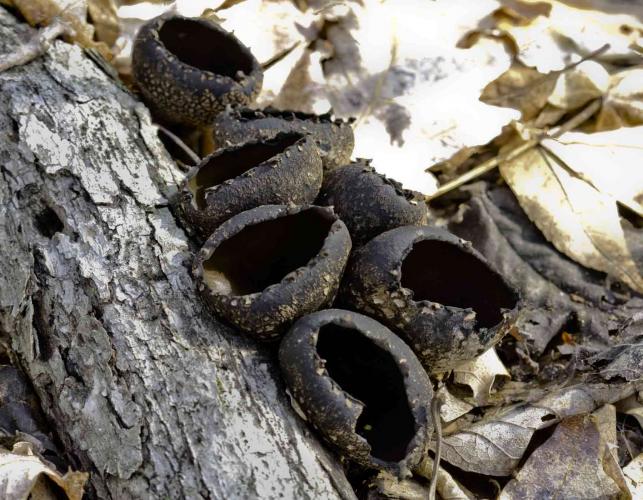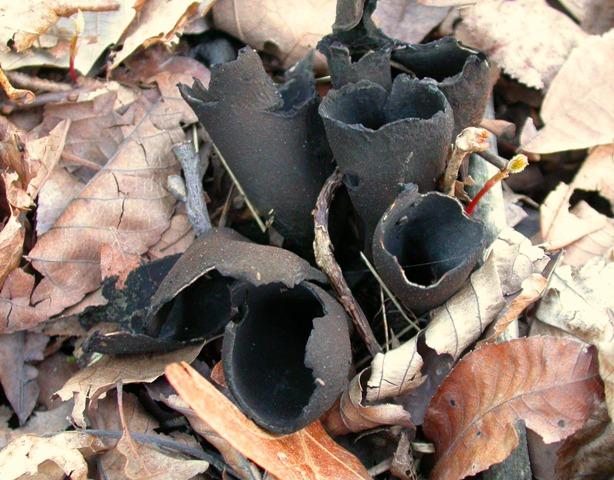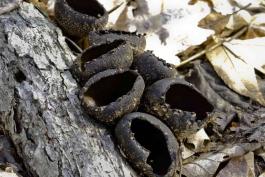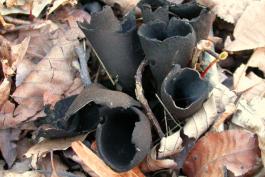
Devil's urns are goblet-shaped, leathery, and brown. They grow in clusters on small to medium-sized decaying branches of hardwoods. March–May. Cup closed when immature, then opening to a deep "urn"; inner and outer surfaces are dark brownish black; texture tough and rubbery. Stalk thick, with sides equal; blackish; with a dense covering of hairs. Spore print blackish brown. Spores magnified are elliptical, smooth.
Lookalikes: Hairy rubber cup (Galiella rufa) fruits July-September (not in spring), and its inner surface is a lighter, chocolate brown. Before the devil’s urn has opened, it may look like dead man’s fingers (Xylaria polymorpha).
Cup width: 1¾–3¼ inches; stalk length: 1¼–1¾ inches; stalk width: ¼ inch.

Statewide.
Habitat and Conservation
Grow singly or in clusters on small to medium-sized decaying branches of hardwoods, especially the fallen branches of oak trees, often where they come in contact with the soil. When they are growing from buried wood, it can seem like they're growing out of the ground.
Status
Not edible. However, experienced morel hunters know that when devil’s urns are mature, it is a good sign that morels are popping!
Life Cycle
This species exists as a network of fungal cells (mycelium) within dead trees, stumps, and buried dead tree roots, digesting and decaying the wood. In early spring, the mycelium develops the “urns.” At first they are round, sometimes resembling bunches of dark brown grapes. As they grow and swell, the top tears open, forming the goblet shape. Spores form inside the cups and blow away to start new mycelia elsewhere.
Human Connections
Many mushrooms have often been bestowed with poetic or fanciful names, reflecting the amusement they bring to us. Discovering these fungi can bring out our innate capacity for awe and wonder.
Ecosystem Connections
Fungi are vitally important for a healthy ecosystem. This fungus feeds off of hardwood trees such as dead oaks, decomposing their fallen logs, branches, and buried roots. This cleans the forest and helps nutrients to cycle back into the soil.






Mushrooms are a lot like plants, but they lack chlorophyll and have to take nutrients from other materials. Mushrooms are neither plants nor animals. They are in a different kingdom — the fungi. Fungi include the familiar mushroom-forming species, plus the yeasts, molds, smuts, and rusts.
Always be cautious when eating edible mushrooms. Be absolutely sure of the ID, and only eat a small amount the first time you try it to avoid a reaction..





















